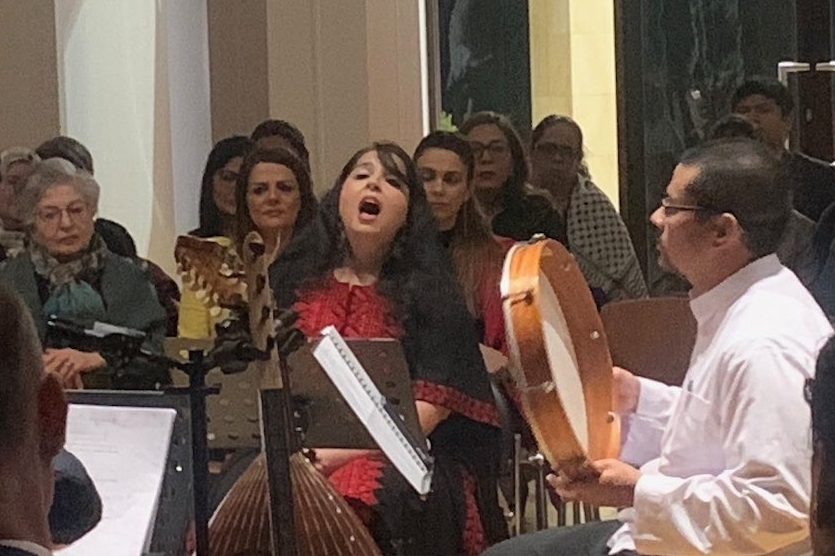
Visual art / “Barka the Forgotten River”. At the Belconnen Arts Centre until July 21. Reviewed by ROB KENNEDY.
EXHIBITIONS rarely come as multi-faceted and important as “Barka the Forgotten River”. It is full of art and artefacts that tell an important story of the Darling River, known as the Barka by the Barkandji people from around Wilcannia in NSW.
Barkandji literally means the people of the Barka. Badger Bates and Justine Muller created all the artworks in this presentation in partnership with the Wilcannia community.
From the swirling patterned sands on the floor of the Belconnen Arts Centre (BAC) that are covered with clay-cast footprints and found objects, to an audio-visual display, this show is one of the most diverse and deeply affecting exhibitions to hit Canberra.
The Barka river is a waterway under threat and the story of the exhibition is told from a cultural, social and economic perspective of how this disappearing river affects the Barkandji people and local wildlife.

The linocut black and white prints standout for their contrast and immediate representations of dying fish and the flora and fauna that depend on the river as a life source. The hanging mobile of mussel shells that are engraved with animals that rely on the river in “Fragile River”, 2018, by Badger Bates are particularly beautiful and touching.
This exhibition brings awareness in the strongest possible way. It shows how this dying river affects the people and their way of life that has been connected to this watercourse for thousands of years. This exhibition says, stop destroying what you don’t own.
The oil-painted portraits of local people on found tin that has been beaten, which imitates the shape of the land are finely crafted almost life-size images. The characters portrayed highlight the determination of a strong nation of people. The large colour photos of children and adults dancing and camping by the river offer a desolate, yet hopeful view of what life is like for some Australians.
A selection of small photos shows the artists and locals at work creating several artworks in this exhibition. Their footprints are pressed into the clay and it says, we are of this land and here is my mark to prove it. All the artworks represent the deep connection that the Barkandji people have to the Barka river and how they rely on it, and, as Badger Bates says: “When they take the water from a Barkandji person, they take our blood”.
The idea and content for this show draws attention to the plight of the Barka river and the people who live around it through its skilfully created artworks. Justine Muller says: “This is a celebration of the Barkandji people’s rich culture whilst also leaving the audience with a sense of hope,” and it does.
Who can be trusted?
In a world of spin and confusion, there’s never been a more important time to support independent journalism in Canberra.
If you trust our work online and want to enforce the power of independent voices, I invite you to make a small contribution.
Every dollar of support is invested back into our journalism to help keep citynews.com.au strong and free.
Thank you,
Ian Meikle, editor





Leave a Reply